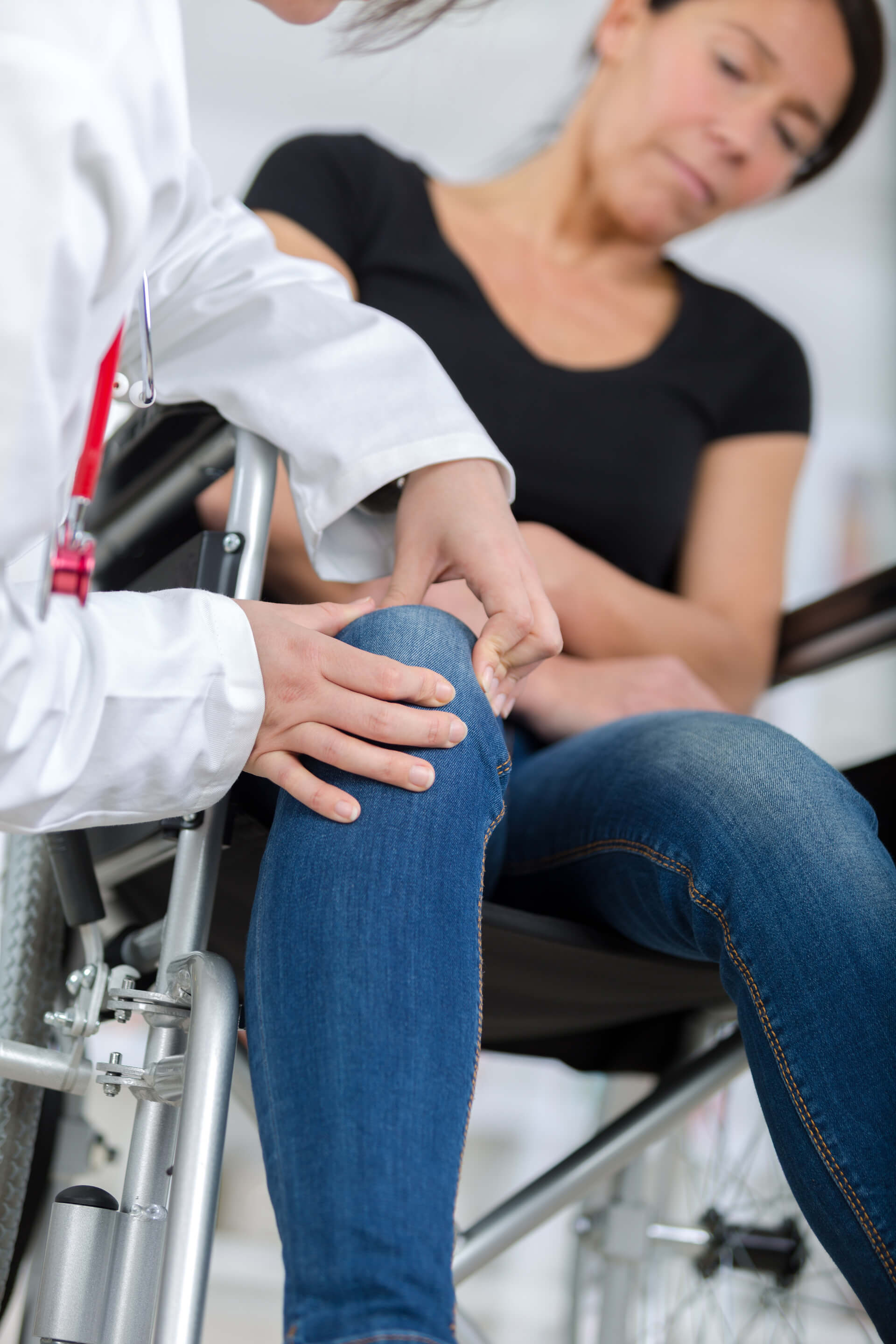Patellofemoral Pain Syndrome
Everything You Need To Know About Patellofemoral Pain

There are various potential reasons why you might be having knee pain, but the most common classification of knee pain is called Patellofemoral Pain Syndrome, which can also be known as Patellofemoral Dysfunction, Runner’s Knee or Jumper’s Knee. This condition is very common within the athletic population, particularly in females and young adults, but it is also commonly apparent in non-athletes.
What is Patellofemoral Pain Syndrome?
Patellofemoral Knee Pain Syndrome, Runner’s Knee, or Jumper’s Knee are common knee conditions that often result in discomfort and pain at the knee joint while participating in weight-bearing activities. Most commonly, the pain and discomfort arise during prolonged periods of walking, standing, running or jumping.
The knee joint is various structures that allow the joint to function correctly. The knee joint is made up of the femur (thigh bone), the tibia (shin bone), and the patella (knee cap). Multiple ligaments and tendons connect these bones together and act as stabilizers to keep the joint stable. There are also muscles that connect to tendons to further stabilize and support the knee joint. Last but not least, there is a slippery substance called articular cartilage that covers the end of the femur, trochlear groove and the underside of the patella. This cartilage helps the bones glide smoothly against other bones during daily movement.
Causes of Patellofemoral Knee Pain Syndrome

Overuse or Repetitive Stress
Often, patellofemoral pain syndrome is caused by repetitive and vigorous physical strain on the knee joint such as jogging, squatting and stair-climbing. Also, a change in duration, frequency and/or intensity of the activity may contribute to the pain.
Patellar (Kneecap) Misalignment
Abnormal tracking of the kneecap in the trochlear groove can also contribute to this pain. This abnormality of tracking may cause unnecessary increased pressure on the kneecap, which can irritate the surrounding soft tissues.
This misalignment is can also be caused due to imbalances of the hips and ankles. Since our body never functions in isolation, the hip and ankle muscles can often contribute to the increase of knee pain.
Signs and Symptoms of Patellofemoral Knee Pain Syndrome
Patellofemoral pain syndrome can often feel sharp, achy, dull, or throbbing in and around the kneecap. This pain usually begins gradually and is highly-related to certain movements or activities. Although symptoms normally start at one knee, it can gradually be felt at the other knee if not treated. Other symptoms may happen:
During repetitive exercise/activities that bend the knee, such as climbing stairs, running, jumping or bending down.
After prolonged periods of sitting e.g. desk work, driving, during an airplane flight
After a change in activity type, level, intensity or frequency
Treatment of Patellofemoral Knee Pain Syndrome
The most effective and best long-term treatment approach for Patellofemoral Knee Pain Syndrome is through an evidence-based assessment from a licensed physiotherapist or chiropractor.
Our downtown Toronto physiotherapists and chiropractors are trained healthcare professionals who are able to properly assess and observe where your pain is stemming from. A detailed history-taking session will let the physiotherapist or chiropractor your daily habits and activities. Additionally, a functional movement assessment will occur where you will be required to perform a few physical movements to further assess the culprit of your knee pain. They will be able to determine the root of your patellofemoral knee pain and design a treatment plan accordingly.
Our downtown Toronto physiotherapists and chiropractors use various treatments for patellofemoral knee pain syndrome including manual “hands-on” treatment, corrective exercise therapy, and other modalities such as shockwave therapy, electrical stimulation, and ultrasound therapy. Other tools that may be applied include therapeutic taping, bracing, dry needling, acupuncture and custom orthotic insoles.
Conclusion
Patellofemoral knee pain syndrome is a knee pain condition that is often gradual and non-traumatic. This means that the pain can eventually get worse if not assessed and treated in its early stages. It is always best to pursue professional advice as early as possible to avoid further aggravation and a longer recovery process.
Book with one of our experienced downtown Toronto physiotherapists or chiropractors to get a proper assessment for your knee, so you can safely return to the activities and sports that you love!

Joshua Irwanto, MSc PT, Hons. BA Kin
Registered Physiotherapist

Disclaimer: Do not treat this as medical advice as it is used for educational purposes only. If you are having pain or health-related complaints, please seek out a licensed healthcare professional. Physiotherapists and chiropractors are primary health care professionals with in-depth knowledge of the human body with specializations in hands-on clinical skills to assess, diagnose, and treat illness, injury or disability.
-
Learn more about our Patellofemoral Pain Syndrome program or Request a Consultation today!
55 University Avenue, Mezzanine Floor, M002, Toronto, ON, M5J 2H7, (416)7223393, Patellofemoral Pain Syndrome

